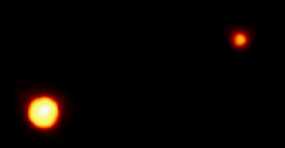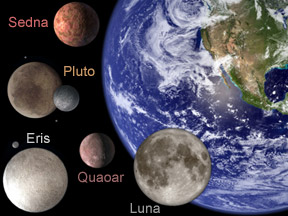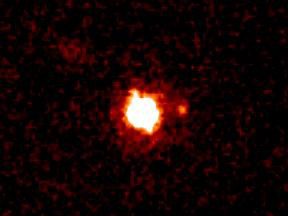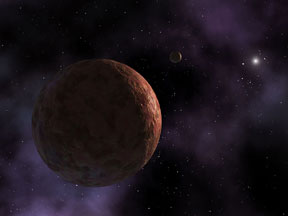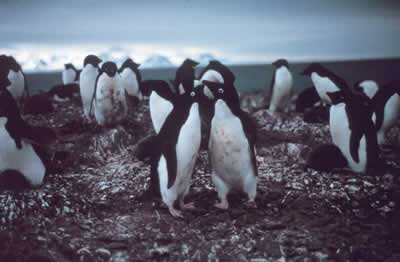Click on image for full size
Image courtesy Dr. R. Albrecht (ESA/ESO Space Telescope European Coordinating Facility) and NASA.
Pluto demoted - no longer a Planet!
News story originally written on August 24, 2006
Pluto has been officially demoted from its status as a planet. The International Astronomical Union (IAU), at a meeting in August 2006, voted on their first "official" definition of a planet. Based on this new definition, Pluto is no longer a planet. According to the IAU's definition, our Solar System has eight planets: Mercury, Venus, Earth, Mars, Jupiter, Saturn, Uranus, and Neptune. In the new scheme, Pluto will be one of several "dwarf planets" in the Solar System; but "dwarf planets" are not considered true planets.
The controversy over Pluto's status as a planet has been brewing for years. Astronomers have long hypothesized the existence of a large class of icy objects, called Kuiper Belt Objects (KBOs), on the fringes of our Solar System. The first KBO was discovered in the early 1990s. Scientists recognized that Pluto, which was discovered in 1930, was really "just" one of many KBOs. In terms of its composition and its orbit, Pluto is unlike the other eight planets; but is quite similar to other objects in the Kuiper Belt. Until 2003 Pluto was still the largest of the KBOs yet discovered. However, the discovery of 2003 UB313 in that year further called into question Pluto's status as a full-fledged planet.
There is still some controversy and disagreement amongst astronomers about the new definition of a "planet". We will have to wait and see whether the new definition "sticks" or not. For now, there are three official classes of objects in our Solar System: planets, dwarf planets, and small solar system bodies. Planets include the eight traditional planets from Mercury to Neptune, but no longer Pluto. Pluto is joined amongst the dwarf planets by 2003 UB313 and the large asteroid Ceres. Several other Trans-Neptunian Objects (TNOs) will likely join the ranks of the dwarf planets, including Sedna and Quaoar. Small solar system bodies include most asteroids, comets, and meteoroids.
Depending on how the debate amongst astronomers plays out, we will adjust the references to Pluto on the Windows to the Universe web site in the coming weeks to reflect current scientific thinking. Stay tuned!


